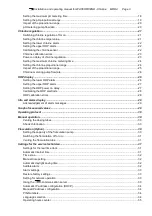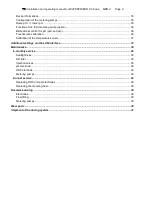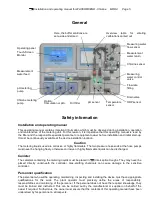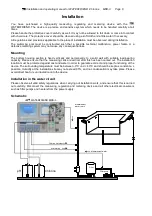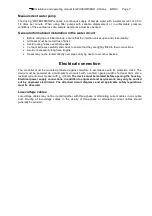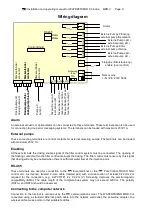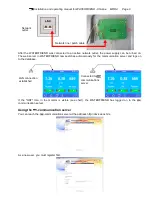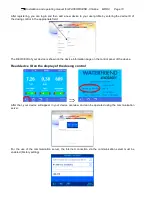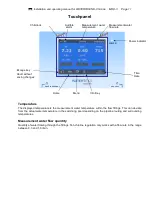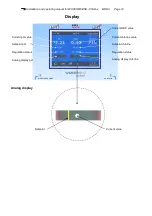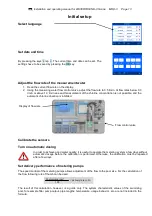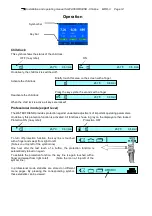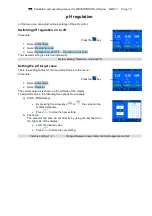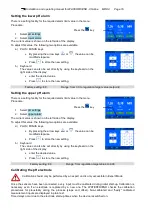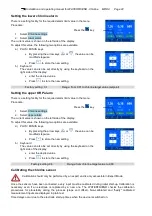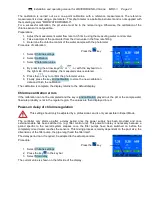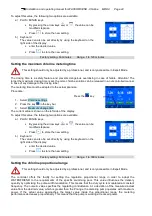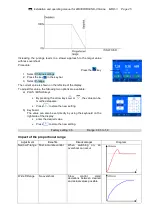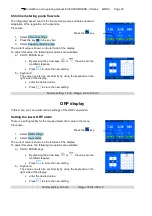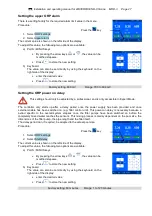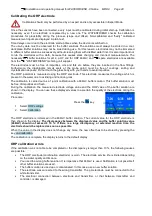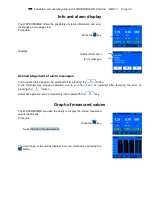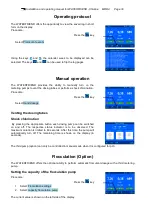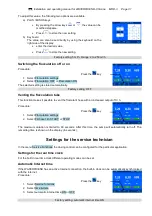
Installation and operating manual for WATERFRIEND -Chlorine MRD-3 Page 17
The use-by date must be observed for the buffer solutions The solutions must always be stored in a cool,
dark place. Buffer solutions may not be soiled during use. For this reason, electrodes may not be immersed
in different buffer solutions successively without cleaning them with distilled water first. It is also important not
to rub the electrodes with a cloth, because this causes static charging and incorrect measurements. The
necessary
buffer solutions for pH 4, pH 7 and for ORP 468mV and
spare electrodes are available
from the
"WATERFRIEND“ metering unit supplier.
The electrodes must be free of impurities, oils and fats etc before they are inserted in the flow fittings.
Furthermore, the diaphragms (small spots at the probe point) must be free of coatings, soiling and
crystallisation deposits. Do not touch the glass body with your hands to avoid impurities.
The calibration is carried out as a 2-point calibration with 2 buffer solutions. These buffer solutions must be
free of impurities and fresh.
During the calibration, the measured electrode value and the pH values for the buffer solutions set are
shown in the display. You can use these displayed values to ascertain the quality of the electrode during the
calibration.
Calibrating the upper value (pH 7)
Procedure:
Press the
key
1. Select pH settings
2. Select Calibration
In the first stage, the upper point (pH 7) is calibrated. To do this, the pH electrode is immersed in a buffer
solution of pH 7. The current values for the pH electrode are then shown in the display. When the value in
the display does not change any more, you can either
select end calibration
or
Single-point calibration (pH):
The calibration is complete. The offset value is
accepted and stored
select to 2. point
Two-point calibration (pH):
Continue to calibration of lower value (pH 4)
Calibrating the lower value (pH 4)
In the second stage, the lower point (pH 4) is calibrated. To do this, the pH electrode (which must have been
cleaned in distilled water first) is immersed in a buffer solution of pH 4. The current values for the pH
electrode are then shown in the display. When the value in the display does not change any more, press end
calibration to store the new offset and slope values of the sensor.
Caution: It is also important not to rub the electrode with a cloth, because this causes static charging and
incorrect measurements.
Once calibration is complete, the slope and offset of the electrode are shown in the display.
If the offset difference falls below a value of ± 60mV, the calibration cannot be correctly completed. The
display shows the message Big divergence.
The slope must be in a range between 45.0 and 65.0 mV. If not, the calibration cannot be correctly
completed. The display shows the message Big divergence.
If the electrode values are outside specific tolerances, a message is shown to alert you to this fact. If this is
the case, the electrode should be replaced as soon as possible.
pH calibration errors
If the calibration was not able to be completed and the Big divergence is shown in the display, the following
causes are possible:
•
The pH electrode (combination electrode) is worn. The electrode service life is limited depending on
the water quality and its care.
•
You have mixed up the buffer solution sequence (1st pH 7, 2nd pH 4). This sequence must be
strictly observed.
•
You used the same buffer solution twice. Correct calibration can only be carried out with two different
buffer solutions.

